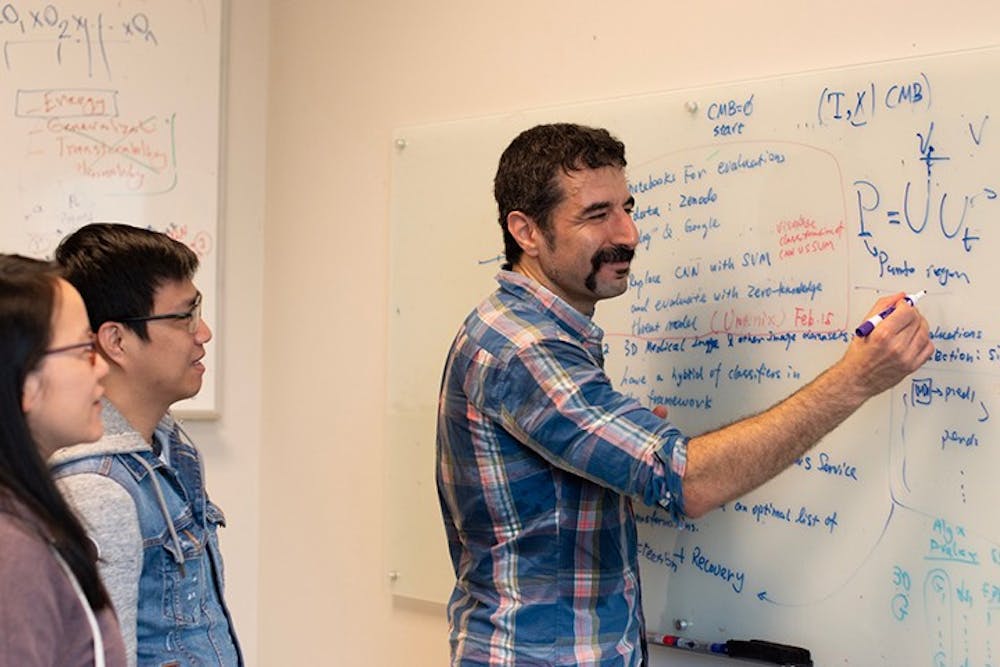NASA's Opportunity rover died after exploring Mars for 15 years, but College of Engineering and Computing professor Pooyan Jamshidi is working on technology that would allow rovers to adjust and save themselves instead.
Jamshidi, an assistant professor of computer science and engineering, was selected for NASA's RASPERRY SI grant, or the Resource Adaptive Software Purpose-Built for Extraordinary Robotic Research Yields – Science Instruments grant. It is worth $250,000 and lasts for a period of two years.
Research teams submitted highly technical proposals that addressed key challenges and proposed solutions, Jamshidi said. A panel from NASA awarded the grant to two of the 17 submitted proposals.
The key challenge addressed in the proposals was the communication lag. It can take anywhere from 10 minutes to several hours for data from rovers to reach control stations on Earth. Uncertainties such as changes in radiation, weather conditions, physical obstacles and malfunctions require more immediate action than the communication lag allows, Jamshidi said.
With the autonomous AI Jamshidi and his collaborative team are developing, the rovers would be able to save themselves without human supervision. While this might not have saved the Opportunity, which went silent during a Mars dust storm, it could help future rovers.
This team is composed of researchers from USC, Carnegie Mellon University and the University of York and Ph.D. candidates from the University of Arkansas.
Jamshidi is the project’s principal investigator, and he mainly contributes to the technical aspects and code writing. He said he appreciates working with such a diverse team composed of engineers and scientists that have very different learning backgrounds.
"It's really interesting working with someone like [Jamshidi], who does computer science and engineering and all the autonomous aspects of the project because that's not my expertise at all," said Ellen Czaplinski, a Ph.D. candidate from the University of Arkansas and science consultant on the project. "So it's really interesting to think about how the science works in the engineering perspective, and I think that gives it a more well-rounded view.”
Their technology would allow scientists to study and explore the surfaces of outer solar system targets more easily and efficiently. It would also save NASA a significant amount of money if rovers were able to be easily salvaged on missions.
“We’re talking about billions — possibly trillions — of dollars going down the tube because of a communication issue,” said Katherine Dzurilla, a Ph.D. candidate from the University of Arkansas and another science consultant on the project.
Jamshidi said once the research period is complete, the team’s developed technology would need to pass NASA’s tests to be approved for application. At NASA’s Ames Research Center, their developed technology would need to pass a virtual, simulated test. At the Jet Propulsion Laboratory, their technology would be applied to a physical rover.
According to NASA, if successful, the team's research and technology would be applied to space missions to ocean worlds such as Europa and Titan.
The RASPBERRY-SI grant is part of NASA’s Autonomous Robotics Research for Ocean Worlds (ARROW) program, which, according to NASA, plans to send rovers out past the asteroid belt and deeper into space where ocean worlds are located.
Ocean worlds have a thick, hard surface and a liquid water subsurface, according to NASA's website. Scientists are looking for microbial life in the liquid subsurface that would help discover if there is life in the universe.
"I've always been fascinated by research in space, especially in the context of NASA," Jamshidi said. “I see this as a once-in-a-lifetime opportunity to make some impact hopefully at some point in the future."

